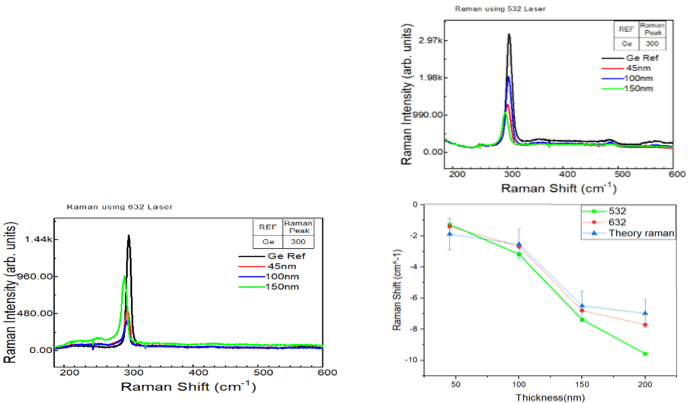Dynamic Strain and Composition Study of GeSn by 632 nm and 532 nm Raman Spectroscopy
Student: Lucas A. Blake
Major Professor: Dr. Fisher Yu
Research Area(s):
Microelectronics
Background/Relevance
-
GeSn is a relatively new semiconductor being used for monolithic light emitters on silicon-based platforms.
-
GeSn on silicon creates a large amount of epitaxial strain. This strain is the primary source of material defects and needs to be studied further.
-
A traditional method of measuring the strain of the material is Raman spectroscopy.
Innovation
-
Instead of using one wavelength, two are used to vary the light’s penetration depth into the sample. This allows for thickness dependent strain to be measured.
Approach
- Select four samples of GeSn at 12% varying from 45 nm to 200 nm in thickness.
- Preform Raman spectroscopy using iHR 55 spectrometer on all four samples using 532nm laser.
- Preform Raman spectroscopy using iHR 55 spectrometer on all four samples using 632nm laser.
- Plot Raman Shift vs. Thickness of each sample at different wavelengths in order to determine the effects of penetration depth.
Key Results
- A divergent trend was identified between the Raman shift of the two wave lengths.
- This trend fits the prediction of how penetration depth will effect the shift.

Conclusions
- A divergence appeared in the Raman shifts of the two wavelengths as the samples thickness increased.
- This divergence showed a connection between the penetration depth and the Raman shift.
- This was indicated by the way the Raman shift of each wavelength was very close until after the critical thickness was reached. This led to the conclusion that penetration depth of a laser can affect Raman shift when measuring samples with thickness-dependent characteristics.
